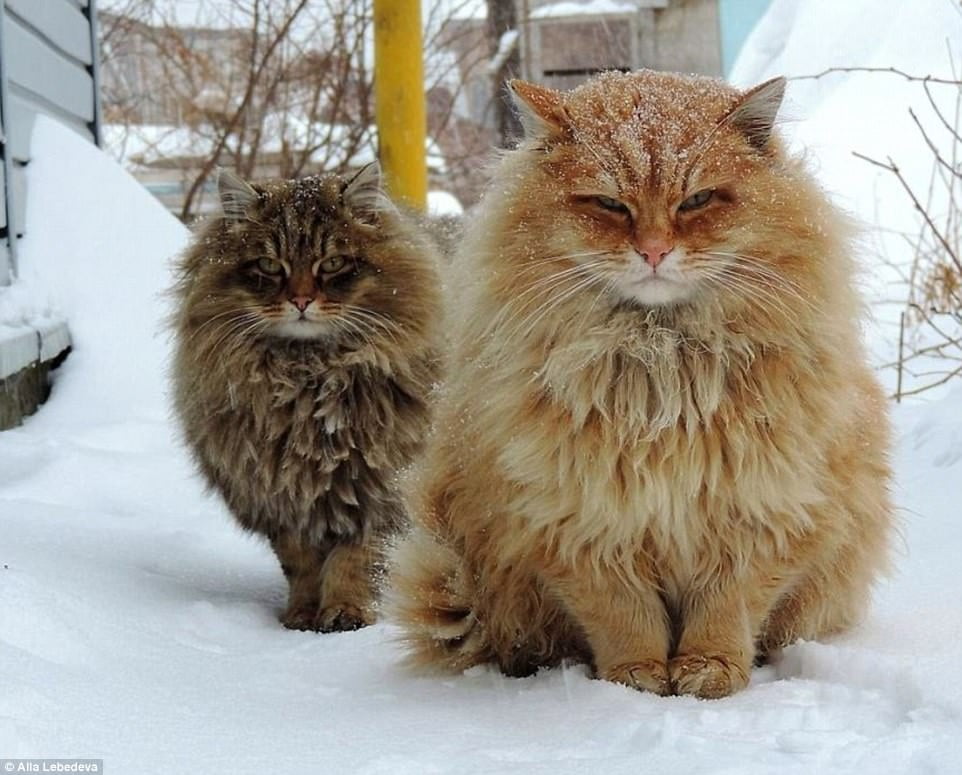Many people know about the purebred Siberian cat. They are larger than average, longhaired cats originally from Siberia, Russia. On this page I present what I’d call real Siberia cats. These are technically random bred cats. They live on a farm in Siberia. It is damn cold; up to minus 15 degrees centigrade a worse. These cats are barn cats. They genuinely live in a barn.
They are the sort of Siberian cats from which breeders in the US created the American version of the Siberian cat which is a mainstream, registered pedigree cat. Looking at them, though, they look awesome. They look better than the purebreds. Their fur is longer. They look hardier. They are probably not neutered which will have had an effect on their appearance. Non-neutered male cats look more male than neutered, pampered domestic cats. They say neutering does not change a cat except for the better but I prefer the appearance of non-neutered male cats.
Alla Lebedeva and her husband Sergey live on a farm in Prigorodny, close to Barnaul, in West Siberia. This is not the Far East. It is half way across Russia. Alla took the photos.

Source: Daily Mail via DesignYouTrust.





Nebbie, could you tell me a bit about yourselF? And also is your comment all your own words with no copying from other websites? Thanks for the comment. It is interesting. It is on the wrong page though 🙂
If you want to comment again (and your comments are welcome) you might like to do a custom search first and then comment on the relevant page.